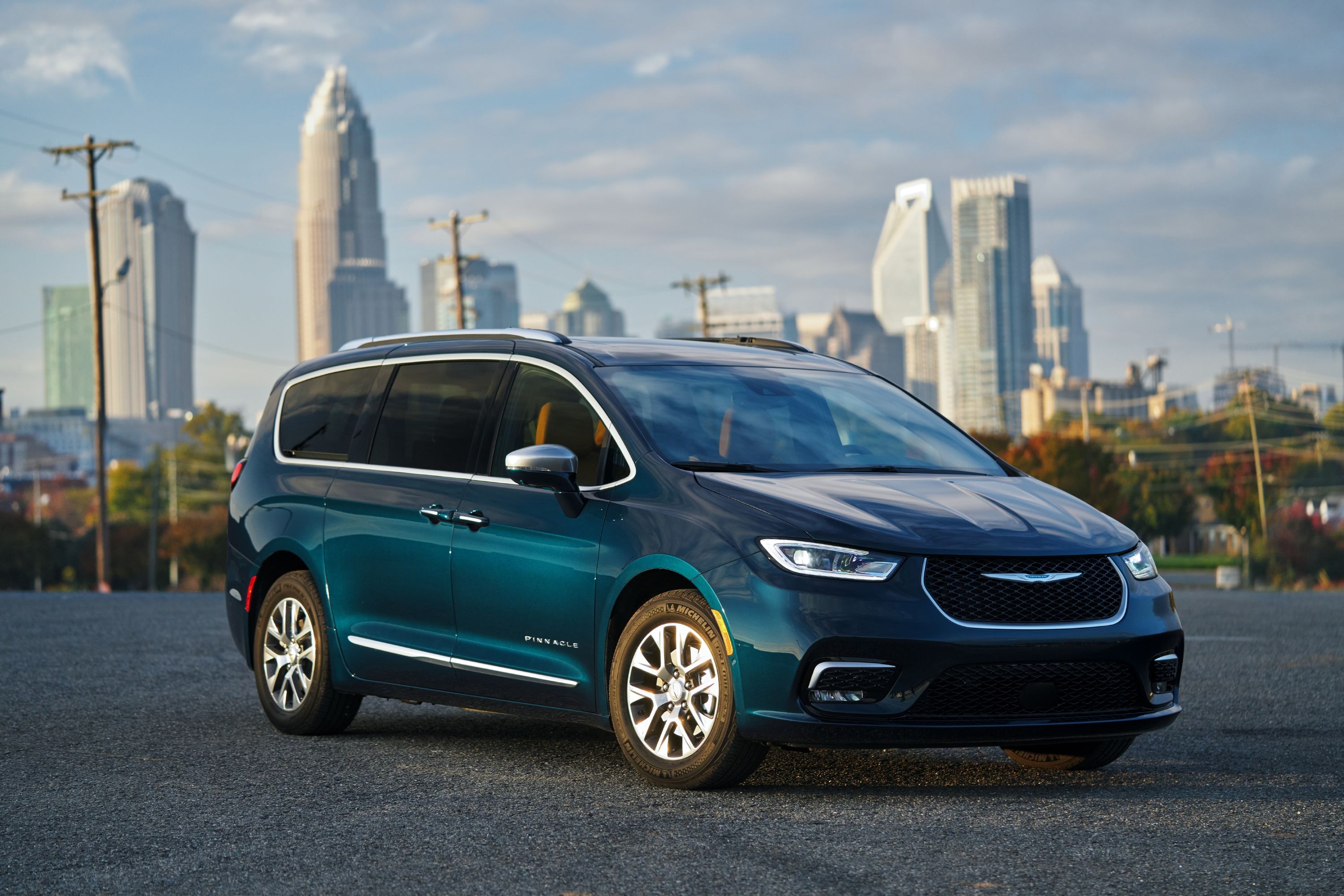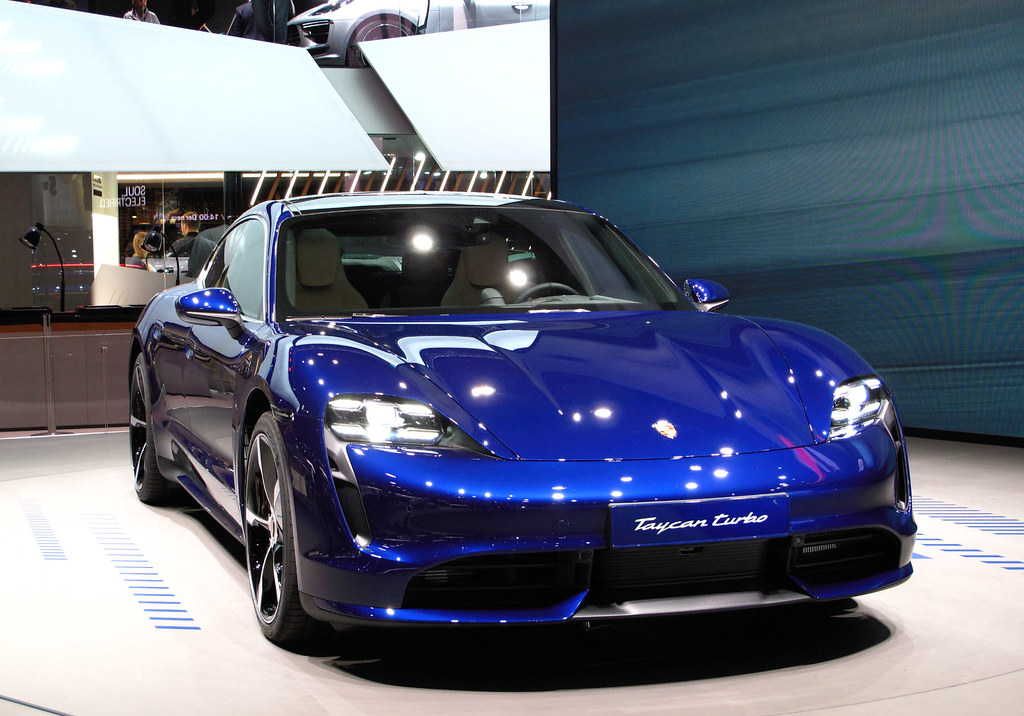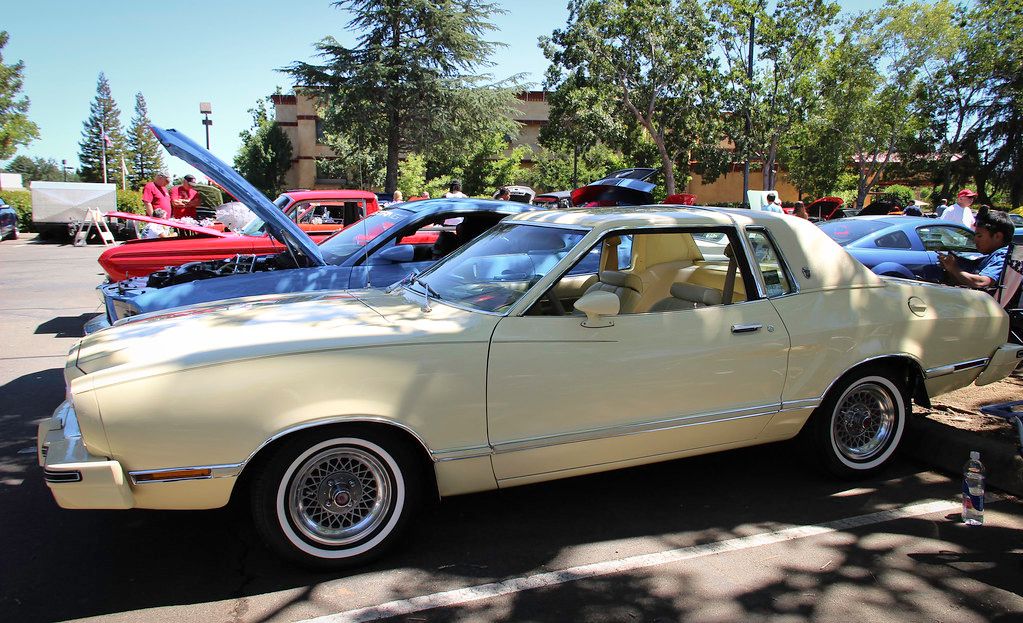
The automotive landscape is a brutal battleground, especially when it comes to pickup trucks. These aren’t just vehicles; they’re statements, tools, and often, extensions of their owners’ identities. The loyalty in this segment is legendary, with brand devotion running deep. Yet, even here, some models just… didn’t make the cut. They rolled off the line with big promises, flashy designs, or innovative ideas, only to crash and burn in the harsh glare of consumer expectation, leaving a trail of tarnished reputations in their wake.
We’re not talking about obscure, no-name failures. Oh no, this is far more interesting. We’re diving into the ambitious misfires, the tone-deaf experiments, the vehicles that proved not every truck wearing a popular badge is guaranteed to be a hit. These are the painful reminders that even in the cutthroat world of pickups, a misguided notion of innovation can backfire spectacularly. A fundamental misread of the market can spell undeniable disaster for even the most established manufacturers.
So, buckle up, because we’re about to embark on a no-holds-barred journey through the automotive annals. We’ll unearth seven trucks that, despite their prestigious badges or bold intentions, were once poised for greatness, but instead drove straight into the wall of bad reputation. From luxury crossovers that forgot their purpose to retro hot rods that were just plain confused, these are the vehicles that taught their manufacturers, and us, some very hard lessons about what truck buyers actually want, and what they absolutely don’t. Prepare for a dose of critical automotive history.
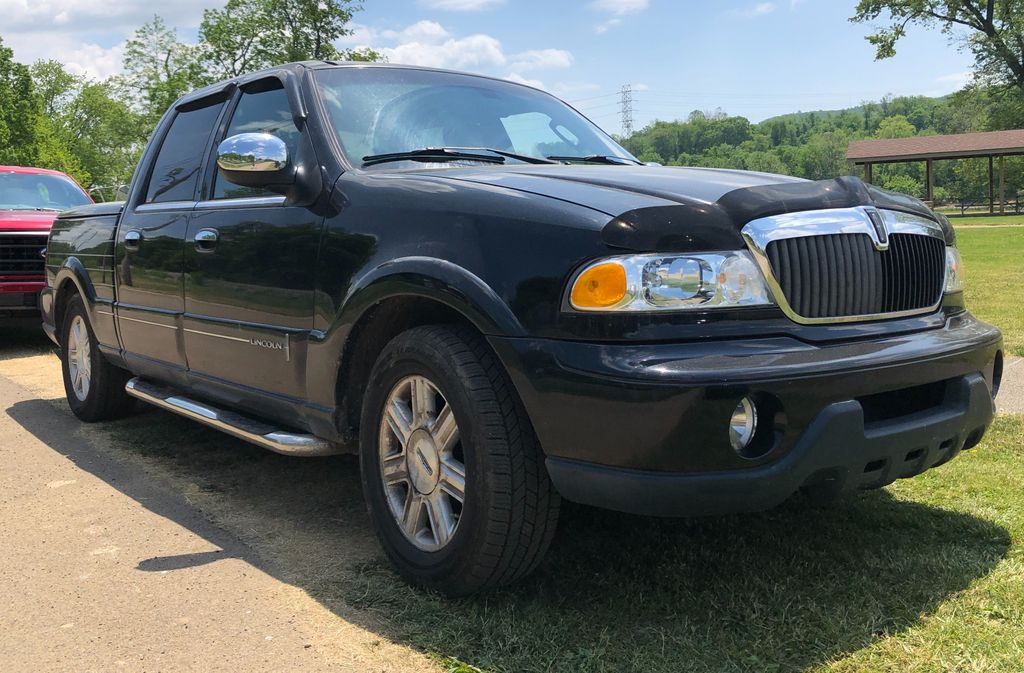
1. 2002 Lincoln Blackwood
When Lincoln decided to dip its toes into the luxury truck market, it wasn’t just a misstep; it was a spectacular cannonball into an empty pool. The 2002 Blackwood, Lincoln’s “first (and short-lived) attempt at a luxury truck,” stands as a “textbook case of misunderstanding the market.” On paper, a premium F-150 might have sounded appealing, but the execution was fundamentally flawed, making it legendary in its ineptitude. It promised opulence but delivered a confusing identity crisis.
The core problem, the one that screamed “we don’t get it” loudest, was the truck’s baffling lack of truck functionality. The “carpeted, non-functional bed that was about as useful as a pickup with a sunroof” immediately alienated its target demographic. This wasn’t just a cosmetic flaw; it was a fundamental misunderstanding of a pickup’s utility, even when draped in luxury. Who, precisely, wants a truck that can’t haul anything dirty, heavy, or remotely practical?
Adding insult to injury, it “lacked four-wheel drive—pretty much a deal-breaker for truck buyers.” In a segment where capability is paramount, offering an ostentatious luxury truck that was essentially a two-wheel-drive suburban cruiser with a useless bed was beyond baffling. With “just 3,383 units sold, Lincoln pulled the plug after one model year,” cementing its legacy as a definitive luxury flop and a cautionary tale of how not to build a truck.
Car Model Information: 2002 Lincoln Blackwood 2WD
Name: Lincoln Blackwood
Manufacturer: Lincoln Motor Company
Production: September 25th 2000 – August 8th, 2002
ModelYears: 2002 (United States),2002–2003 (Mexico)
Assembly: Claycomo, Missouri
Successor: Lincoln Mark LT
Class: luxury car,pickup truck
BodyStyle: pickup truck
Layout: Front-engine, rear-wheel drive layout
Related: Ford F-Series (tenth generation),Lincoln Navigator
Engine: Ford Modular engine#5.4 L
Transmission: Automatic transmission
Wheelbase: 138.5 in
Abbr: on
Length: 220.2 in
Width: 78.0 in
Height: 73.6 in
Designer: Patrick Schiavone
Caption: 2002 Lincoln Blackwood
Categories: All articles with unsourced statements, Articles with short description, Articles with unsourced statements from November 2024, Cars discontinued in 2002, Cars introduced in 2001
Summary: The Lincoln Blackwood is a luxury pickup truck that was marketed by the Lincoln division of Ford Motor Company for the 2002 model year. The first pickup truck marketed by Lincoln, the Blackwood was derived from the Ford F-150 SuperCrew and the Lincoln Navigator. Drawing its name from its simulated black woodgrain cargo box, the Blackwood was offered solely with a black-painted exterior.
Although the concept vehicle had a positive public reception, the production Blackwood fell far under sales projections in the United States and Mexico. After the 2002 model year, the Blackwood was discontinued in the United States, with a short run of 2003 models produced for Mexico. In total, only 3,383 units were produced, making it both the rarest and shortest-produced Lincoln model line.
For 2006, Lincoln entered the pickup truck segment for a second time with the Lincoln Mark LT — again based on the Ford F-150 —which, even though it also sold poorly, was more popular than the Blackwood.
The first Lincoln vehicle manufactured exclusively outside of the state of Michigan since 1958, the Blackwood was assembled by Ford at its Kansas City Assembly facility in Claycomo, Missouri, alongside the F-150 from September 2000 to August 2002.
Get more information about: Lincoln Blackwood
Buying a high-performing used car >>>
Brand: Lincoln Model: Blackwood
Price: $13,999 Mileage: 77,219 mi.
Read more about: Buyer’s Remorse: 15 Cars Drivers Wished They Never Bought

2. 2019 Mercedes-Benz X-Class
Across the pond, even the venerable Mercedes-Benz, a name synonymous with automotive excellence, tried its hand at the pickup game. Hoping to lure “luxury truck buyers,” the German giant launched the 2019 X-Class, a vehicle “primarily available in Europe, Australia, and South Africa.” This international experiment was another premium brand’s ambitious foray into a segment where it fundamentally misunderstood market expectations. Mercedes-Benz apparently thought a badge alone could carry a truck into glory.
The “problem,” however, was glaringly transparent: “It was essentially a rebadged Nissan Navara with a Mercedes price tag.” This wasn’t some innovative, ground-up design reflecting German engineering; it was a cynical exercise in slapping a three-pointed star on a decidedly non-Mercedes workhorse. Truck enthusiasts and discerning consumers can spot a rebadge from a mile away, especially when it comes with a significant price premium not justified by genuine upgrades.
The lack of true Mercedes DNA meant the X-Class struggled to justify its existence. Customers expecting refined ride, cutting-edge technology, and build quality were left wanting. It lacked the distinctiveness to choose it over a more capable competitor. “Consumers saw right through it, and sluggish sales led to its discontinuation in 2020.” It stands as a testament that brand prestige, while powerful, isn’t a magical cloak to hide a fundamental lack of originality, value, and authentic product development.
Read more about: Sorrow in Every Depreciation Drop: 15 Luxury Vehicles Drivers Admit They’d Unbuy to Save Money
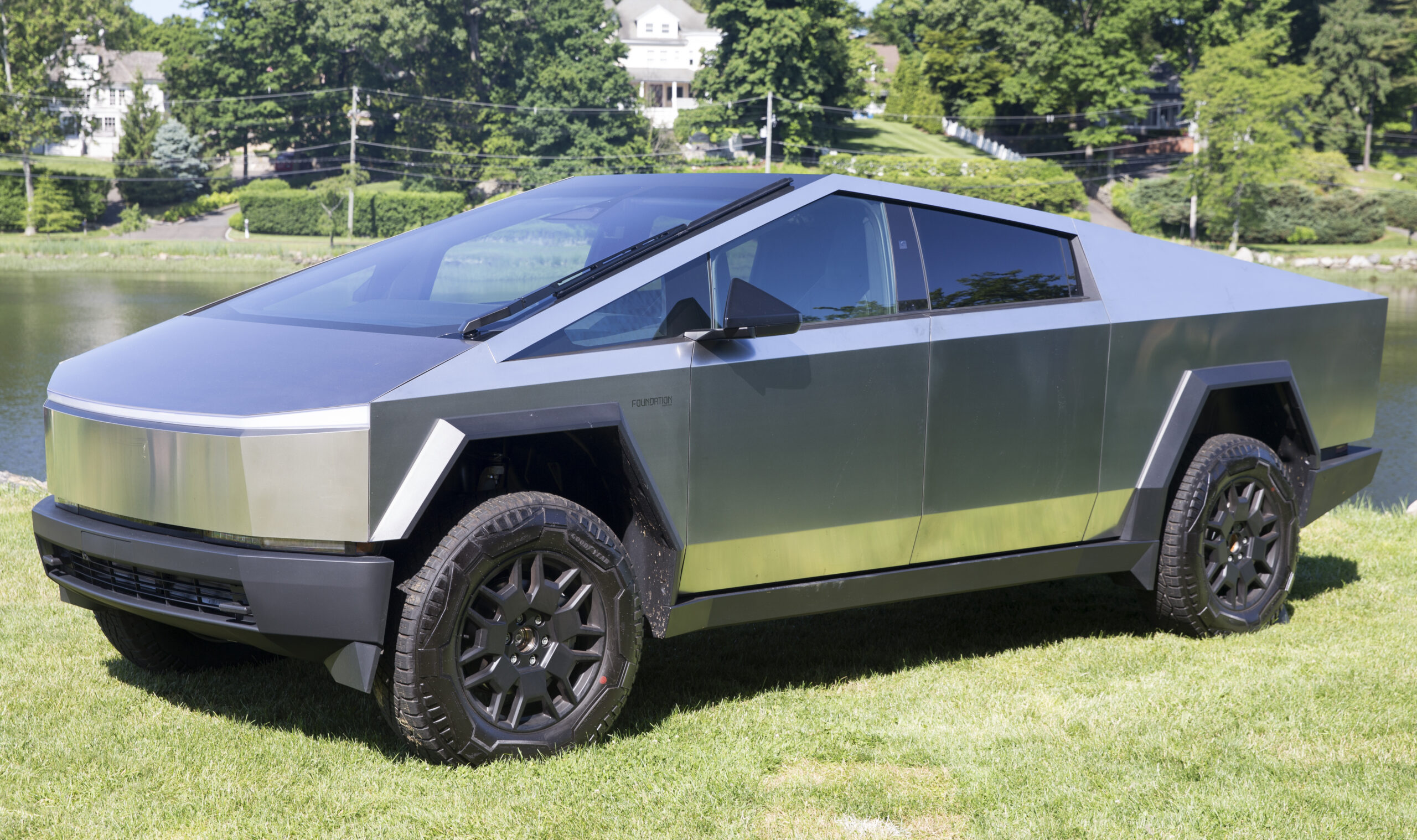
3. 2024 Tesla Cybertruck
Ah, the Cybertruck. If there was ever a truck designed to “disrupt” the industry, it was this one, and it certainly accomplished that—though perhaps not in the way Tesla initially intended. Tesla promised “a futuristic, game-changing design,” and boy, did they deliver on the “futuristic” part. Its stainless-steel exoskeleton and sharply angular lines looked like something ripped straight from a low-poly video game, immediately polarizing the entire automotive world. This wasn’t just a new truck; it was an experiment, a statement, and for many, a bizarre vision of the future.
However, the reality, as it often does with highly ambitious projects, quickly diverged from the initial promise. Once production ramped up, “early models suffered from production issues, build quality concerns, and a price that didn’t match the initial promise.” Tesla’s ambitious vision frequently runs ahead of its manufacturing capability, and the Cybertruck appears no exception. Reports of panel gaps, rust spots, and general fit-and-finish woes quickly began to circulate, dampening the futuristic allure with real-world imperfections.
The Cybertruck was pitched as the ultimate utility vehicle, yet its practical application has proven far more complicated and controversial. Its unique design, while visually striking, presents numerous ergonomic and practical challenges. The initial allure of its distinctive aesthetic couldn’t fully overcome the practical hurdles that traditional truck buyers prioritize. “What started as a vehicle to “disrupt” the truck industry instead became a niche product struggling to gain mainstream traction.” For many, the Cybertruck represents a triumph of concept over practical execution, impacting Tesla’s broader reputation.
Car Model Information: 2024 Tesla Cybertruck All-Wheel Drive
Name: Tesla Cybertruck
Caption: 2024 Tesla Cybertruck, Foundation Series
Manufacturer: Tesla, Inc.
Production: November 2023 – present
ModelYears: 2024–present
Assembly: Austin, Texas
Designer: unbulleted list
Class: Pickup truck
BodyStyle: crew cab
Layout: unbulleted list
Transmission: Single-speed fixed (15:1 ratio)
ElectricRange: cvt
Wheelbase: cvt
Length: cvt
Width: cvt
Height: cvt
Weight: Unbulleted indent list
Sp: us
Charging: unbulleted list
Battery: val
Motor: unbulleted indent list
Categories: 2020s cars, All-wheel-drive vehicles, All Wikipedia articles written in American English, All articles containing potentially dated statements, All articles with unsourced statements
Summary: The Tesla Cybertruck is a battery-electric full-size pickup truck manufactured by Tesla, Inc. since 2023. It was first unveiled as a prototype in November 2019, featuring a distinctive angular design composed of flat, unpainted stainless steel body panels, drawing comparisons to low-polygon computer models.
Originally scheduled for production in late 2021, the vehicle faced multiple delays before entering limited production at Gigafactory Texas in November 2023, with initial customer deliveries occurring later that month. As of 2025, three variants are available: a tri-motor all-wheel drive (AWD) model marketed as the “Cyberbeast”, a dual-motor AWD model, and a single-motor rear-wheel drive (RWD) “Long Range” model. EPA range estimates vary by configuration, from 320 to 350 miles (515 to 565 km).
As of 2025, the Cybertruck is sold in the United States, Mexico, Canada and South Korea. The Cybertruck has been criticized for its production quality and safety concerns while its sales have been described as disappointing.
Get more information about: Tesla Cybertruck
Buying a high-performing used car >>>
Brand: Tesla Model: Cybertruck
Price: $74,995 Mileage: 2,133 mi.
Read more about: The Electric Pickup Truck Showdown: A Comprehensive Review of Ford F-150 Lightning and Tesla Cybertruck

4. 2006 Honda Ridgeline
Honda, a brand synonymous with reliability and clever engineering, took a truly bold, if highly controversial, step into the truck market with the 2006 Ridgeline. This wasn’t your typical body-on-frame beast; it was a “unibody Ridgeline,” a “radical departure from traditional body-on-frame pickups.” It promised car-like comfort, handling, and safety, aiming squarely at buyers who wanted the utility of an open bed without traditional truck drawbacks. It was a truck for people who didn’t necessarily want a *truck* truck.
“While comfortable and innovative,” boasting features like an integrated bed and a novel dual-action tailgate, the Ridgeline faced an uphill battle against deeply entrenched perceptions. Its very strengths were often perceived as significant weaknesses by traditional truck-buying populace. “Its towing capacity and ruggedness fell short of expectations for truck buyers.” For those ingrained in the body-on-frame ideology, the Ridgeline simply wasn’t “truck enough.” It wasn’t built for heavy-duty hauling, extreme off-roading, or the kind of sustained abuse traditional pickups were designed to endure, leading to a reputation of being a “soft” truck.
This perception gap proved to be its Achilles’ heel. “Early sales struggled as traditional truck owners passed it over.” Despite its undeniable virtues as a comfortable, capable daily driver with an open bed – perfect for weekend warriors and casual DIYers – it simply couldn’t shake the perception that it wasn’t a “real” truck. “It has since found a small, loyal audience,” but it never achieved mainstream success its innovative design hinted at. It demonstrated that even a clever approach can stumble if it doesn’t align with deeply held market expectations and traditional values.
Car Model Information: 2023 Honda Ridgeline Black
Name: Honda Ridgeline
Manufacturer: Honda
Caption: 2022 Honda Ridgeline
Production: 2005–early 2015,2016–present
ModelYears: 2006–2014,2017–present
Assembly: Alliston, Ontario
Class: Pickup truck#Mid-size pickup truck
BodyStyle: 4-door pickup truck
Layout: ubl
Categories: 2010s cars, All-wheel-drive vehicles, All Wikipedia articles written in American English, Articles with short description, CS1 maint: multiple names: authors list
Summary: The Honda Ridgeline is a mid-size pickup truck manufactured and marketed by Honda since the 2006 model year, over two generations in a unibody, crew–cab, short-box configuration with a transverse-mounted engine.
Get more information about: Honda Ridgeline
Buying a high-performing used car >>>
Brand: Honda Model: Ridgeline
Price: $31,997 Mileage: 46,675 mi.
Read more about: Beyond the Hype: 13 Unbreakable Imports Engineered to Outlast Your Driving Dreams, Mile After Relentless Mile

5. 2004 Chevrolet SSR
The 2004 Chevrolet SSR is one of those vehicles that makes you wonder what exactly the designers and product planners were thinking. It was, in the words of the context, “a bizarre mashup of a retro hot rod, convertible, and pickup truck.” Chevy, it seems, banked heavily on a potent cocktail of nostalgia and novelty, hoping that its quirky aesthetic would translate into booming sales. But nostalgia can be a particularly fickle mistress, especially when paired with a highly impractical and confused concept.
Underneath its unquestionably peculiar skin, the SSR packed serious muscle, at least on paper, featuring “V8 engines—starting with 300 horsepower and later bumping up to 390.” However, “none of that mattered much when the truck weighed 4,700 pounds.” The sheer curb weight, combined with its less-than-aerodynamic form, meant that “performance was underwhelming.” It was neither a convincing, nimble hot rod nor a particularly sprightly or capable pickup. It was an exercise in compromise and stylistic excess.
The functional shortcomings were equally, if not more, damning. The ingenious-yet-space-consuming “folding roof took up most of the bed space, making it a truck in name only.” This rendered the already “tiny bed” even more useless for any practical purpose. Consequently, the SSR ended up as “more of a collector’s oddity than a useful truck.” It looked cool, but its real-world utility and performance left much to be desired, leaving a reputation of being a show pony, not a workhorse. Its run was predictably short-lived, lasting “just three years before Chevy scrapped the idea,” solidifying its reputation as a well-meaning but ultimately confused novelty.
Car Model Information: 2004 Chevrolet SSR LS
Name: Chevrolet SSR
Manufacturer: Chevrolet
Production: 2003–2006
ModelYears: 2003–2006
Assembly: Lansing, Michigan
Class: Pickup truck
BodyStyle: ubl
Platform: GMT360
Related: ubl
Layout: Front-engine, rear-wheel drive layout
Engine: ubl
Transmission: ubl
Wheelbase: 116.0 in
Abbr: on
Length: ubl
Width: 78.6 in
Height: ubl
Designer: ubl
Categories: All articles needing additional references, All articles with unsourced statements, Articles needing additional references from July 2008, Articles with short description, Articles with unsourced statements from August 2023
Summary: The Chevrolet SSR (Super Sport Roadster) is a retro-styled and retractable hardtop convertible pickup truck manufactured by Chevrolet between 2003 and 2006.
During the 2003 and 2004 model years, the SSR used General Motors’ 5.3 L 300 hp (224 kW; 304 PS) Vortec 5300 V8. Performance was 7.7 seconds for 0–60 mph (0–97 km/h) with a 15.9 second 1⁄4 mile (402.3 m) time at 86.4 mph (139.0 km/h).
For the 2005 model year, the SSR used the 390 hp (291 kW; 395 PS) LS2 V8 engine also used in the C6 Corvette, Trailblazer SS, and Pontiac GTO, now offering a manual transmission option, the six-speed Tremec, for the first time. Performance improved dramatically with the LS2; the 6-speed manual version had an advertised 0–60 mph (97 km/h) acceleration time of 5.29 seconds. In addition, GM badges were added to the vehicle.
For 2006, output of the LS2 increased to 395 hp (295 kW; 400 PS).
Get more information about: Chevrolet SSR
Buying a high-performing used car >>>
Brand: Chevrolet Model: SSR
Price: $20,899 Mileage: 54,685 mi.
Read more about: Beyond the Icons: 13 Overlooked Pony Cars That Command Respect and Deserve a Second Look

6. 2002 Subaru Baja
Subaru, a brand revered for its quirky all-wheel-drive wagons and practical crossovers, made its own memorable attempt to revive the “car-truck hybrid concept” with the 2002 Baja. Positioned as “a quirky blend of crossover and pickup truck wrapped in a funky design,” it was a clear spiritual successor to the cult-classic Subaru Brat. It brought with it the brand’s signature “all-wheel drive and car-like handling,” features that resonate with Subaru loyalists. However, even these hallmarks couldn’t save the Baja from its overall struggle for broad appeal.
The Baja suffered from a profound identity crisis, perpetually struggling to please either car buyers or truck buyers. “It had a tiny bed, odd styling, and wasn’t quite rugged enough for truck buyers or comfortable enough for car buyers.” The fundamental issue was the compromise inherent in its design. The “truck bed was too short to be practical,” severely limiting its utility as a pickup, making serious hauling or even casual moving a frustrating endeavor. Meanwhile, its “interior space wasn’t anything to brag about either,” and its “unimpressive fuel economy” further dampened its attractiveness.
It was a vehicle that embodied the old adage, “jack of all trades, master of none.” It tried valiantly to bridge the gap between two distinct automotive segments but ultimately succeeded in satisfying neither. The distinctive, somewhat polarizing styling, combined with its functional compromises, meant it struggled to carve out a significant niche. “Sales fizzled, and Subaru pulled the plug after four years,” leaving the Baja as another entry in the long list of vehicles that tried to be everything to everyone and ended up being not quite enough for anyone.
Car Model Information: 2006 Subaru Baja Sport
Name: Subaru Baja
Caption: 2006 Subaru Baja Sport
Manufacturer: Subaru-Isuzu Automotive, Inc.
Production: July 2002 – April 2006
ModelYears: 2003–2006
Assembly: United States
Class: Compact SUV
BodyStyle: coupé utility
Layout: Front-engine, four-wheel-drive layout
Engine: Subaru EJ engine#EJ251,Subaru EJ engine#EJ253,Subaru EJ engine#EJ255
Transmission: Automatic transmission,Manual transmission
Wheelbase: 104.3 in
Abbr: on
Disp: flip
Length: 193.1 in
Width: 70.1 in
Height: 2003–04: {{convert,64.2,in,mm,0,abbr=on,disp=flip
Related: Subaru Legacy (third generation)
Predecessor: Subaru BRAT
Categories: All-wheel-drive vehicles, Articles with short description, Cars discontinued in 2006, Cars introduced in 2002, Commons category link from Wikidata
Summary: The Subaru Baja is an all-wheel-drive, four passenger coupé utility manufactured from 2002 to 2006 by Subaru and marketed for model years 2003 to 2006. The Baja combines the handling and passenger carrying characteristics of a traditional passenger car with the open-bed versatility and load capacity of a small pickup truck.
The unibody design borrowed heavily from the existing mechanicals, platform and sheet metal of the Subaru Legacy/Outback wagon. Production began on July 18, 2002 as a 2003 model at the Subaru of Indiana Automotive, Inc. factory in Lafayette, Indiana.
The name Baja derives from the Mexican peninsula of Baja California; home to the Baja 1000 off-road race.
Get more information about: Subaru Baja
Buying a high-performing used car >>>
Brand: Subaru Model: Baja
Price: $11,999 Mileage: 109,715 mi.
Read more about: Beyond the Badges: 14 Low-Key Trucks That Quietly Outperformed Expectations
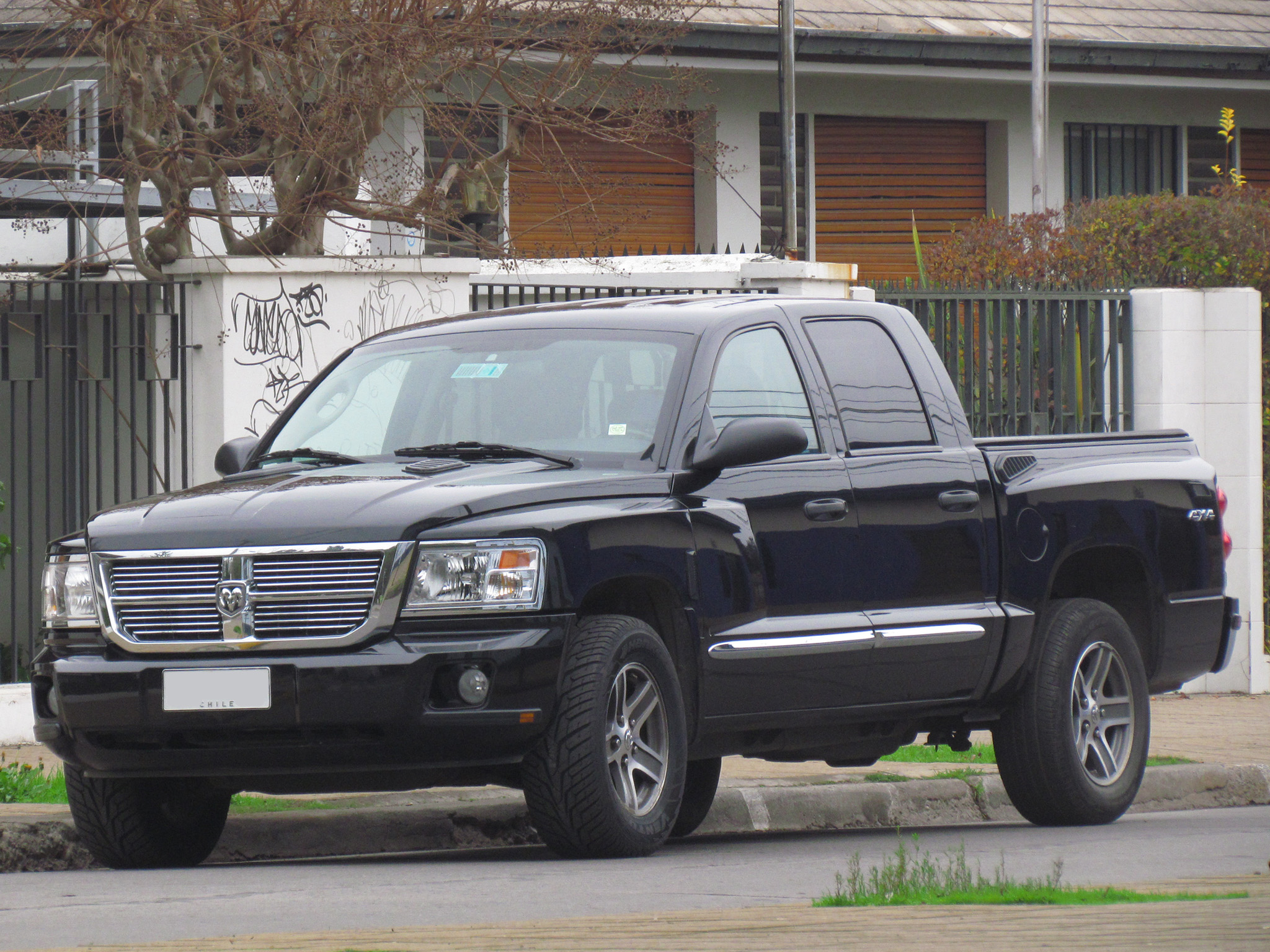
7. 2010 Dodge Dakota
The Dodge Dakota was once a midsize truck hero, a capable and respected player in a segment that offered a crucial stepping stone between compact and full-size pickups. But by “2010, it had lost its edge,” having drifted into competitive obsolescence. What was once supposed to be the “perfect midsize truck” eventually found itself caught in a painful middle ground, unable to compete effectively on either side of the truck spectrum. This wasn’t a radical concept or a luxury misfire; this was a seasoned player that simply grew stale and lost its way in a rapidly evolving market, allowing its reputation to erode.
The Dakota’s problem was dimensional, both literally and figuratively. As the market shifted, so did expectations for midsize trucks. “It was too big to compete with smaller trucks but not capable enough to steal full-size buyers.” While its size might have been an advantage in earlier years, by 2010, rivals had either slimmed down their compacts or beefed up their full-sizers, leaving the Dakota in an awkward no-man’s-land. It offered little distinct advantage, failing to impress with either its maneuverability or its raw hauling prowess.
Furthermore, its lack of significant updates and innovation meant it fell behind in features, refinement, and fuel efficiency compared to increasingly competitive rivals. The Dakota felt increasingly anachronistic, a relic from a bygone era. It was stuck in a segment that demanded either compact efficiency or full-size brawn, and it offered neither convincingly enough to retain its loyal base or attract new buyers. “Slumping sales led to its discontinuation in 2011, marking the end of Dodge’s midsize truck ambitions.” The Dakota’s decline highlights how critically important it is for a product to constantly adapt.
The automotive landscape, particularly for pickups, is littered with ambitious projects that, for various reasons, just couldn’t quite stick the landing. In our first dive, we explored some truly unique misfires, but the lessons don’t stop there. As we continue our critical journey, we’ll encounter more trucks that, despite promising beginnings or established badges, ultimately drove off a cliff of reliability woes, identity crises, or simply a profound misunderstanding of what truck buyers actually demand. Prepare to explore how even the most established names can stumble and lose their hard-earned reputation in the relentless pursuit of market share.
Car Model Information: 1998 Dodge Dakota Base
Name: Dodge Dakota
Manufacturer: Unbulleted list
Production: 1986–2011
ModelYears: 1987–2011
Assembly: Unbulleted list
Class: Mid-size pickup truck
Layout: Unbulleted list
Predecessor: Dodge Ram 50
Categories: 1990s cars, 2000s cars, 2010s cars, All-wheel-drive vehicles, All articles with unsourced statements
Summary: The Dodge Dakota, marketed as the Ram Dakota for the final two years of production, is a mid-size pickup truck manufactured by Chrysler and marketed by its Dodge Truck division (model years 1987–2009) and later its Ram Truck division (2010–2011) — across three generations.
The Dakota was larger than the compact pickups from Ford and Chevrolet, the Ford Ranger and Chevrolet S-10, and was smaller than full-sized pickups such as Dodge’s own Ram. It used body-on-frame construction and a leaf spring/live axle rear end and was the first mid-size pickup with an optional V8 engine. For its entire production, the Dakota was manufactured at Chrysler’s Warren Truck Assembly in Michigan.
The Dakota was nominated for the North American Truck of the Year award for 2000.
Get more information about: Dodge Dakota
Buying a high-performing used car >>>
Brand: Dodge Model: Dakota
Price: $12,625 Mileage: 54,263 mi.
Read more about: More Than Just Rust: 14 SUVs That Were Once Desirable, Now Sadly Dated – A Deep Dive for Enthusiasts
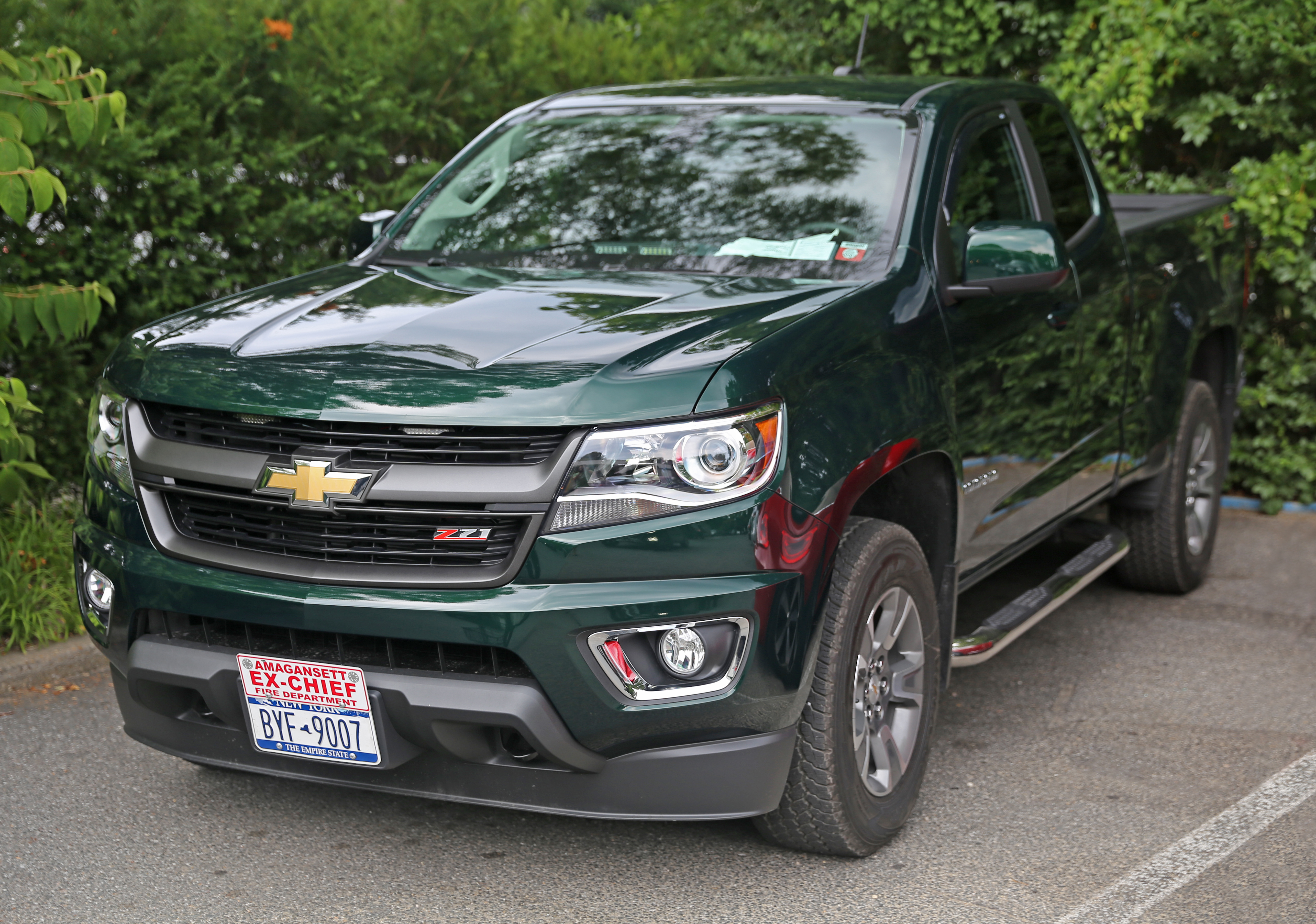
8. 2015 Chevrolet Colorado Diesel
The introduction of a diesel option for the popular Chevrolet Colorado in 2015 initially sounded like a masterstroke, a move designed to appeal to a segment of truck buyers who crave torque, fuel efficiency, and the undeniable ruggedness associated with diesel powerplants. It was a proposition that, on paper, promised to elevate the Colorado’s appeal and carve out a significant niche in the midsize market.
However, the “real-world” experience, as it so often does, began to diverge from the pristine marketing. While the diesel certainly delivered on some fronts, it soon became plagued by “reliability issues and higher-than-expected maintenance costs.” This isn’t just a minor inconvenience; it’s a fundamental blow to a truck’s reputation, eroding any perceived fuel savings and adding unexpected burdens to ownership.
The market’s reception reflected these practical concerns. “While some diesel fans loved it, mainstream buyers didn’t see enough of an advantage to justify the added cost and complexity.” If the benefits don’t convincingly outweigh the drawbacks, the product’s value proposition collapses. The diesel Colorado, for all its potential, found itself struggling for widespread market traction, caught between a passionate niche and a skeptical majority.
Car Model Information: 2015 Chevrolet Colorado WT
Name: Chevrolet Colorado
Caption: 2024 Chevrolet Colorado Z71
Manufacturer: General Motors
Production: 2003–2012, 2014–present (US),2004–2020
(Thailand),2011–present (Brazil)
Class: Pickup truck,Pickup truck
Layout: Front-engine, rear-wheel-drive layout
Predecessor: Chevrolet S-10,Chevrolet D-Max,Holden Rodeo,Holden Ute
Aka: GMC Canyon,Holden Colorado
Categories: 2010s cars, 2020s cars, All-wheel-drive vehicles, All articles with dead external links, Articles with dead external links from November 2016
Summary: The Chevrolet Colorado (sharing mechanical commonality with the GMC Canyon) is a series of compact pickup trucks (mid-size since second generation) marketed by American automaker General Motors. They were introduced in 2004 to replace the Chevrolet S-10 and GMC S-15/Sonoma compact pickups. The Colorado is named after the U.S. state of Colorado, while the Canyon took its name from the deep chasm between cliffs.
Get more information about: Chevrolet Colorado
Buying a high-performing used car >>>
Brand: Chevrolet Model: Colorado
Price: $19,495 Mileage: 23,450 mi.
Read more about: Beyond the Badges: 14 Low-Key Trucks That Quietly Outperformed Expectations

9. 2005 Ford Explorer Sport Trac
Ford, a titan in the truck world, isn’t immune to missteps, and the 2005 Explorer Sport Trac serves as a poignant reminder of that fact. This vehicle was an ambitious attempt to bridge the gap between SUV comfort and pickup utility, essentially creating “part SUV, part truck.” It aimed to capture the growing number of consumers who needed occasional bed utility without the traditional drawbacks of a full-size pickup.
Yet, the Sport Trac ultimately suffered from an identity crisis, struggling to fully satisfy either demographic. Its “small, awkwardly shaped bed” was a compromise that offered neither generous cargo capacity nor seamless integration into the SUV form factor. Furthermore, it “lacked the power and capability of a proper pickup,” alienating traditional truck buyers who prioritize hauling and towing prowess.
What ensued was a prolonged struggle to find its footing. The Sport Trac “never really found its audience,” lingering on the market without truly resonating with consumers. Its inability to excel at either of its intended functions, instead offering a diluted experience, sealed its fate. Ford “ultimately discontinued it in 2010,” ending a noble but flawed experiment that wasn’t quite enough for anyone.
Read more about: Navigating the Minivan Maze: The 11 Most Resilient and Least Dependable Models for Families
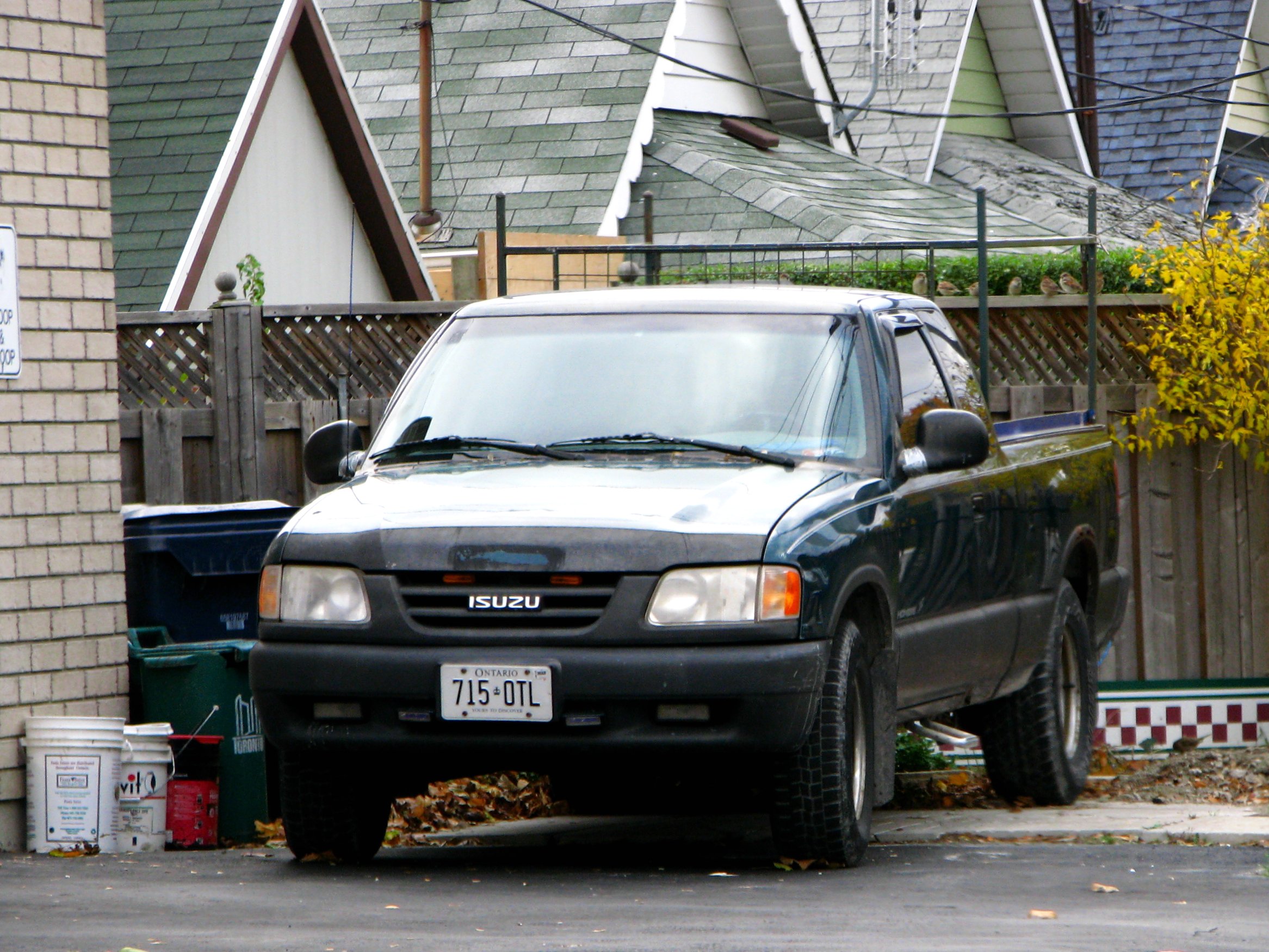
10. 2001 Isuzu Hombre
Isuzu’s foray into the U.S. pickup market with the 2001 Hombre is a classic example of how a lack of originality and brand presence can sink a product. The Hombre was, in essence, “little more than a rebadged Chevrolet S-10,” a strategy that, while potentially cost-effective for the manufacturer, rarely excites consumers or offers a compelling reason to choose it.
The problem was glaringly obvious: “It didn’t offer anything unique to truck buyers.” In a fiercely competitive market, simply rebadging another company’s product without adding significant value, distinct features, or a compelling reason to choose it, is a recipe for anonymity. Compounding this, Isuzu “never had a strong foothold in the U.S. pickup market.”
Predictably, the outcome was grim. “Sales were weak, and it quietly disappeared after the 2000 model year.” The Hombre’s brief existence serves as a stark reminder that in the automotive world, especially in a segment as brand-loyal as pickups, offering a rebadge without a unique value proposition is a highway to obscurity, eroding any truck credibility a brand might have.
Read more about: Navigating the Drivetrain Divide: A MotorTrend Guide to Pickup Truck Transmissions That Endure and Those That Falter
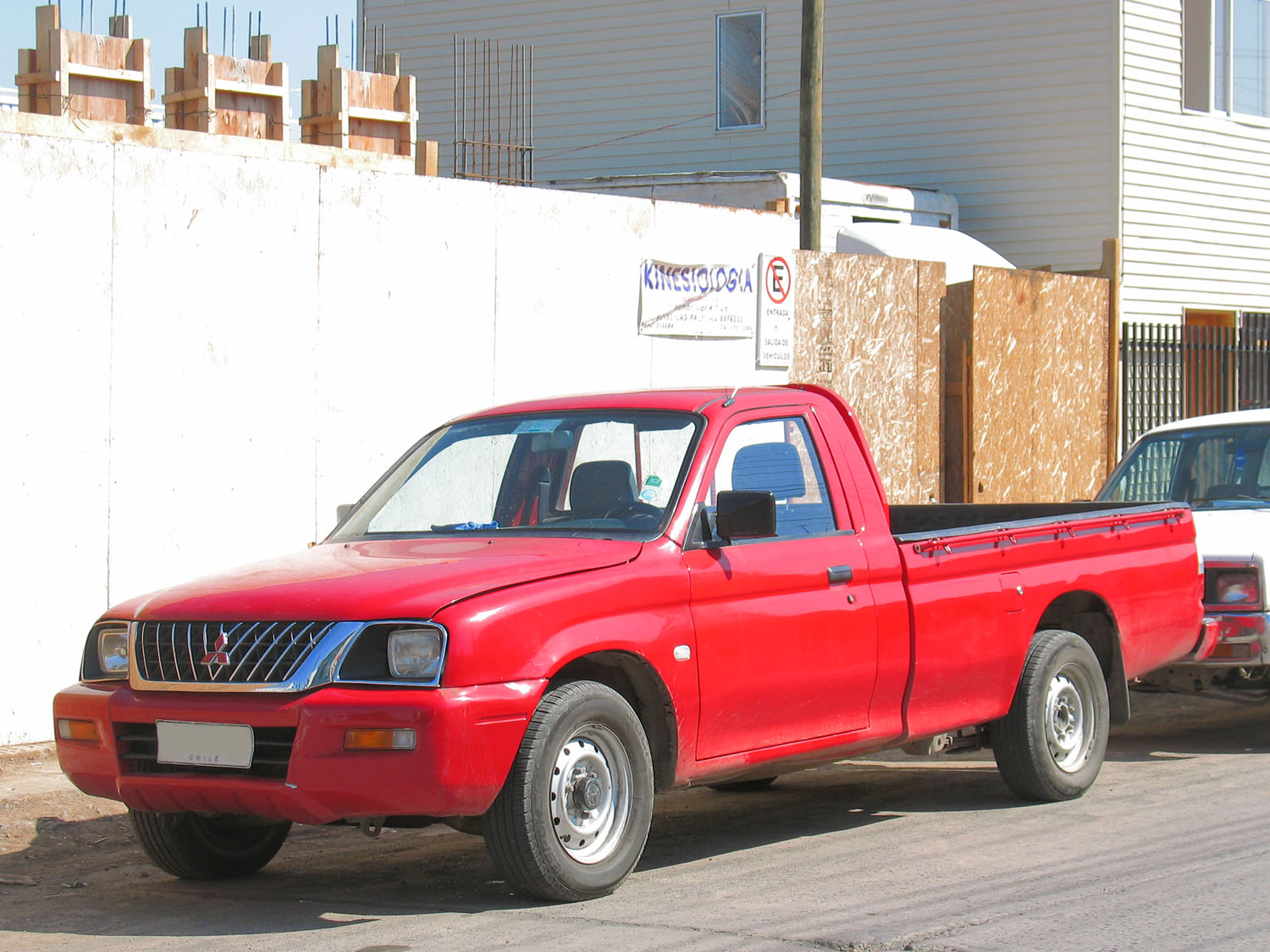
11. 2003 Mitsubishi Raider
Mitsubishi, much like Isuzu, attempted to carve out a niche in the North American midsize truck segment, launching the 2003 Raider. In a move that highlights the pervasive practice of platform sharing, this truck was “based on the Dodge Dakota,” immediately putting it in a challenging position, as the Dakota itself was already struggling with an identity crisis.
The fundamental issue was, once again, a critical lack of distinction. The Raider “failed to stand out in any meaningful way” amidst a sea of increasingly competitive offerings. It offered little unique appeal compared to rivals like the Frontier or Tacoma, leading to an almost instant reputation for mediocrity.
This lack of market differentiation, coupled with Mitsubishi’s broader struggles in the U.S., sealed the Raider’s fate. “Low sales and Mitsubishi’s shrinking U.S. presence led to the Raider’s demise by 2009.” It became another casualty in the midsize truck wars, demonstrating that a mere badge swap isn’t enough to capture truck buyers’ imaginations.
Car Model Information: 2007 Mitsubishi Raider LS
Name: Mitsubishi Raider
Caption: Mitsubishi Raider DuroCross (Double Cab)
Manufacturer: DaimlerChrysler
Production: Fall 2005–June 11, 2009
ModelYears: 2006–2009
Assembly: Warren, Michigan,Normal, Illinois
Predecessor: Mitsubishi Mighty Max
Successor: Ram Dakota
Class: Mid-size,pickup truck
BodyStyle: 4-door pickup truck; extended cab or double cab
Layout: Unbulleted list
Platform: Chrysler N platform
Engine: ubl
Transmission: Automatic transmission
Wheelbase: Convert
Length: Convert
Width: Convert
Height: Convert
Related: Dodge Dakota
Sp: us
Categories: 2000s cars, All-wheel-drive vehicles, Articles with short description, Cars discontinued in 2009, Cars introduced in 2006
Summary: The Mitsubishi Raider is a pickup truck from Mitsubishi Motors that debuted in the fall of 2005 as a 2006 model for the United States market and is based largely on the Dodge Dakota. The name is recycled from the Dodge Raider SUV sold from 1987 to 1990, which was a rebadged Mitsubishi Montero.
The Raider filled the gap in the Mitsubishi lineup since the discontinuation of the Mighty Max in 1996. Though Mitsubishi was still building their own Triton at the time, it would have been subject to the chicken tax, while an American-built pickup was not. Chrysler manufactured the Raider alongside the Dakota at their Warren Truck Assembly plant in Warren, Michigan, but they were sent to Normal, Illinois, for installation of some Mitsubishi-specific parts and for distribution. Engine choices had included a 4.7 L PowerTech V8 making 230 hp (172 kW) and 290 lb⋅ft (393 N⋅m) and a 3.7 L PowerTech V6 which produced 210 hp (157 kW) and 210 lb⋅ft (285 N⋅m), though by the 2008 model year, only the 3.7 L V6 remained available.
Early sales were disappointing, at only one tenth of the Dakota’s. As Mitsubishi dealers reportedly had a six-month supply of Raiders on their lots the company was obligated to request that DaimlerChrysler cut production. 9,861 Raiders were built in 2005, and just 297 more were built from the first of the year through March 11, 2006. New for 2006 was the “slammed” DuroCross version, which has lower suspension and an aggressive body kit. The DuroCross had a low payload, of only 1,180 lb (540 kg) and lost most of its off-roading abilities. Approximately 8,200 Raiders were sold in 2007.
A concept truck was rebadged as the Street Raider and designed by Mitsubishi’s California design studio. It first appeared at the 2005 SEMA automotive show and since then has been shown at various automotive shows around the United States. It includes 22 inch custom wheels, custom dual exhaust, and a lowered stance among other features not found on a stock Raider. The Street Raider carries a mooted price tag of $60,000, although there are no current plans to sell it.
Get more information about: Mitsubishi Raider
Buying a high-performing used car >>>
Brand: Mitsubishi Model: Raider
Price: $7,995 Mileage: 128,000 mi.
Read more about: Buyer Beware: 15 Sedans That Won’t Make it to 80,000 Miles Without Costly Repairs

12. 2007 Suzuki Equator
The 2007 Suzuki Equator is yet another chapter in the “rebadge” saga, a testament to how established brands can sometimes take shortcuts that ultimately undermine their standing. This truck was, quite simply, “just a Nissan Frontier with different badging,” a gamble that spectacularly failed to pay off.
The core problem for the Equator wasn’t necessarily the underlying vehicle itself, but the utter lack of compelling reasons to choose it over its Nissan counterpart. “With Suzuki’s dealership network already on shaky ground, buyers saw little reason to choose it over the real thing.” It offered no unique features or significant price advantage.
The inevitable outcome was a whimper, not a bang. “Sales were minimal, and it vanished from the market by 2013.” The Equator stands as a stark reminder that authenticity, differentiation, and a strong brand presence are paramount in the highly competitive truck segment. Shortcuts quickly lead to obscurity.
Car Model Information: 2012 Suzuki Equator Sport
Name: Suzuki Equator
Manufacturer: Nissan
Aka: Nissan Frontier
Production: 2008–2012 (USA),2008–2010 (Canada)
Assembly: Smyrna, Tennessee,United States
Class: Mid-size,pickup truck
BodyStyle: 2-door pickup truck,4-door pickup truck
Layout: Front-engine, rear-wheel-drive layout
Platform: Nissan F-Alpha platform
Related: Nissan Navara#D40
Engine: Straight-four engine
Powerout: Convert
Transmission: Automatic transmission
Wheelbase: 125.9 in
Abbr: on
Length: 206.6 in
Width: 72.8 in
Height: 68.7 in
ModelYears: 2009–2012 (USA),2009–2010 (Canada)
Categories: 2000s cars, 2010s cars, All-wheel-drive vehicles, All stub articles, Articles with short description
Summary: The Suzuki Equator was a mid-size pickup truck based on the Nissan Frontier and assembled by Nissan. It was first sold in the US for the 2009 model year with MSRPs starting at $17,220, and made its debut at the 2008 Chicago Auto Show.
The Equator was offered as either a four-seat Extended Cab or a five-seat Crew Cab. In the Canadian market, the Equator is only offered in the Crew Cab configuration, in a single trim level.
Power on base Extended Cab models comes from a 4-cylinder engine. A V6 is optional on Extended Cab models and standard with the Crew Cab. Both engines are supplied by Nissan.
The base 2.5 L QR25DE Inline-4 produces 152 hp (113 kW) at 5,200 rpm and 171 lb⋅ft (232 N⋅m) at 4,400 rpm, and is a rear-wheel-drive. It comes with either a five-speed manual transmission or a five-speed automatic.
The 4.0 L VQ40DE V6 engine develops 261 hp (195 kW) at 5,600 rpm and 281 lb⋅ft (381 N⋅m) at 4,000 rpm. It comes standard with a five-speed automatic and is available with four-wheel-drive.
The Equator won Peterson’s 4Wheel & Off-Road’S 2009 4×4 of the Year, beating out the Dodge Ram 1500, Ford F150, Hummer H3, Kia Borrego, and Toyota Sequoia. Sales of the Suzuki Equator since 2009 have been 5,808 overall, and it rarely sold over 200 units per month.
The Suzuki Equator was discontinued in 2010 for the Canadian market and 2012 for the United States market.
Get more information about: Suzuki Equator
Buying a high-performing used car >>>
Brand: Suzuki Model: Equator
Price: $10,463 Mileage: 158,562 mi.
Read more about: Built to Last: 10 Legendary Vehicles That Rarely Need a Major Engine Overhaul
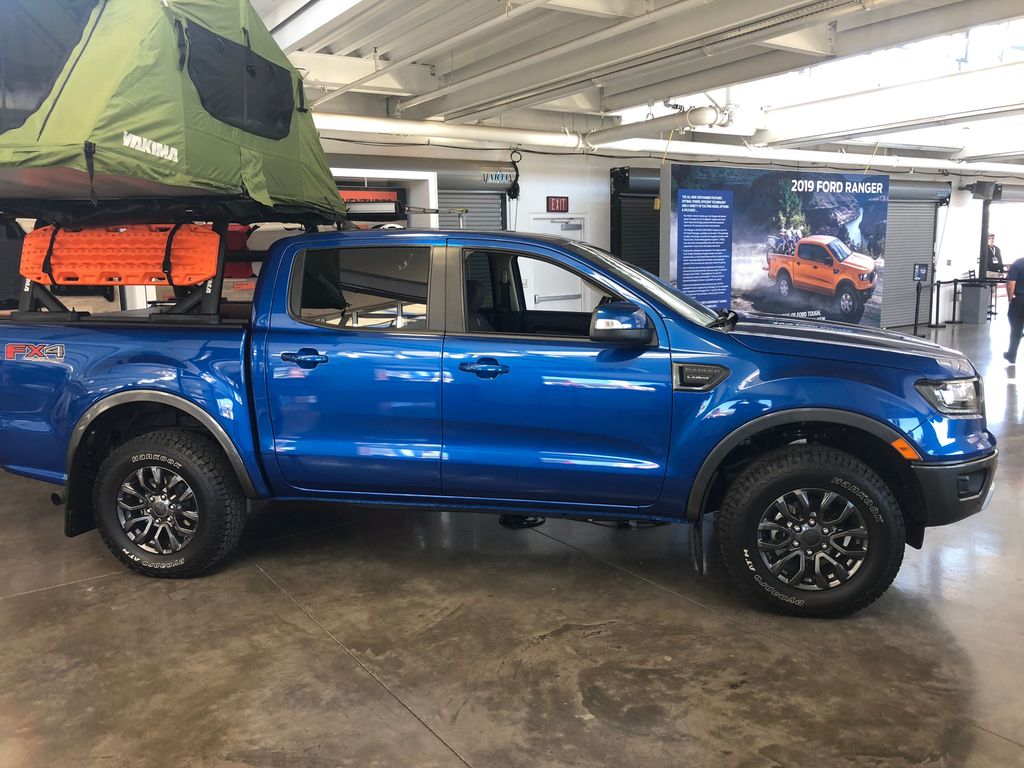
13. 2019 Ford Ranger
The return of the Ford Ranger to the U.S. market in 2019, after an eight-year hiatus, was met with significant buzz. For many, it represented the comeback of a beloved nameplate, a chance for Ford to re-enter the booming midsize truck segment with a modern, capable offering. Expectations were high, given Ford’s undisputed dominance in the full-size truck market.
Unfortunately, the eagerly awaited comeback felt more like a blast from the past. It “felt like an old truck wearing new clothes,” a critical failing because it “lacked modern features and wasn’t as refined as competitors like the Toyota Tacoma and Chevrolet Colorado.” Its interior often felt dated, and it didn’t push the technological envelope, riding on legacy rather than innovation.
Despite these shortcomings, “sales were decent,” indicating the power of the Ranger name and Ford’s massive dealership network. However, it “never dominated the segment like its predecessor.” For Ford, “decent” isn’t good enough when the potential for dominance was clearly there. The 2019 Ranger’s return became a case study in how playing it safe can prevent a vehicle from regaining its former glory.
Car Model Information: 2021 Ford Ranger XL
Categories: All set index articles, Articles with short description, Cars introduced in 1982, Commons category link from Wikidata, Ford vehicles
Summary: The Ford Ranger is a compact or mid-size pickup marketed globally by Ford over a series of generations, varying between both in-house or outside development and manufacturing — and with a hiatus in North America from 2011–2018.
Debuting as a compact pickup in North America in 1982 for the 1983 model year, the Ranger was later introduced in some South American countries. From 1998 to 2011, the Ranger nameplate was used for models developed by Mazda for sale outside the North American market. In 2011, Ford introduced the first Ranger based on the T6 platform. Considered a mid-size pickup truck, the model was developed in-house by Ford Australia. In that same year, the North American-market Ranger was discontinued, leaving the T6 platform-based Ranger as the sole Ranger model worldwide.
For the 2019 model year, the Ranger was reintroduced in North America using the globally-marketed T6 model. It is manufactured at the Michigan Assembly Plant at Wayne, Michigan. The Ranger is smaller than the F-150 and larger than the Maverick in the Ford North American pickup truck range, while for markets outside the Americas it is typically the only Ford pickup offered for sale.
The second generation of the T6-based Ranger was released in 2021 for worldwide markets, using a revised T6 platform.
Get more information about: Ford Ranger
Buying a high-performing used car >>>
Brand: Ford Model: Ranger
Price: $24,950 Mileage: 34,853 mi.
Read more about: The Fifties Unpacked: An Expert’s Guide to the Defining Cultural, Social, and Global Shifts of a Transformative Decade
14. 2005 Lincoln Mark LT
After the unmitigated disaster of the Blackwood, one might think Lincoln would shy away from luxury pickups. But in 2005, they tried again with the Mark LT, demonstrating a persistent belief that a market for an opulent truck existed under the Lincoln badge. This time, Ford took a slightly more practical approach: the Mark LT was “essentially a rebranded Ford F-150 with more chrome.”
Indeed, the Mark LT was “a step up from the Blackwood in terms of functionality,” addressing the previous model’s fatal flaw of a useless bed. Yet, even with genuine utility, the core market resistance persisted. “Buyers still weren’t sold on the idea of a luxury truck from Lincoln.” The perception was that luxury belonged within the F-150’s higher trims, not a separate Lincoln offering.
The ultimate fate of the Mark LT confirms this market reality. Ford “ultimately replaced it with the Platinum-trim F-150.” This strategic shift recognized that luxury truck buyers were perfectly content, and arguably preferred, to buy an ultra-premium F-150, ending Lincoln’s standalone luxury truck ambitions and redefining where opulence fits in the pickup landscape.
**The Road Ahead: Lessons from Reputations Lost**
Our journey through these trucks, once poised for greatness but ultimately losing their way, offers a compelling, sometimes painful, look at the brutal realities of the automotive industry. From luxury misfires that forgot their purpose to rebadged disappointments lacking any real identity, and even promising comebacks that simply felt too old, these vehicles serve as potent cautionary tales. They remind us that product development isn’t just about engineering; it’s about deeply understanding the market, anticipating real-world needs, and, crucially, earning and maintaining consumer trust.
Car Model Information: 2024 GMC Sierra 1500 SLT
Name: Lincoln Mark LT
Layout: Front-engine, rear-wheel-drive layout,rear-wheel drive
Manufacturer: The Lincoln Motor Company
Production: 2005–2008 (United States and Canada),2005–2014 (Mexico)
Class: Full-size car,luxury car,pickup truck
Predecessor: Lincoln Blackwood
Successor: Ford F-Series (thirteenth generation)
BodyStyle: 4-door pickup truck
Related: Ford F-Series,Lincoln Navigator
Assembly: Dearborn, Michigan,Michigan
Caption: 2006–2008 Lincoln Mark LT
ModelYears: 2006–2008 (United States and Canada),2006–2014 (Mexico)
Categories: 2010s cars, All-wheel-drive vehicles, All articles needing additional references, All articles with unsourced statements, Articles needing additional references from August 2008
Summary: The Lincoln Mark LT is a luxury pickup truck manufactured and marketed by Ford’s Lincoln division for model years 2006–2008 (U.S. and Canada) and 2006–2014 (Mexico) as a badge engineered, luxury-trimmed variant of the Ford F-150 truck — and a successor to the 2002-only Lincoln Blackwood.
The Mark LT was manufactured at Ford’s River Rouge Plant in Dearborn, Michigan, and at the Ford Cuautitlan plant in Cuautitlán, Mexico, on the same lines as the closely related Ford F-150, on which it was based. It used the same 330-cubic-inch, 300 hp (224 kW; 304 PS) 5.4 L Triton V8 and has four doors. The Mark LT also had optional all-wheel drive.
Lincoln projected selling 13,000 Mark LT’s annually in the United States. The Mark LT was more successful than the Blackwood in its first year of sales with 10,274 sold in the first calendar year of sales (February 2005 through February 2006). The 2006 Mark LT outsold the Cadillac Escalade EXT, but the 2007 EXT gained on the Mark LT’s sales consistently. After disappointing sales, the Mark LT was cancelled in the United States and Canada after the first generation. A second generation was marketed in Mexico where it was often the Lincoln Division’s best selling model.
Get more information about: Lincoln Mark LT
Buying a high-performing used car >>>
Brand: Lincoln Model: Mark LT
Price: $43,759 Mileage: 32,694 mi.
Read more about: Navigating the Minivan Maze: The 11 Most Resilient and Least Dependable Models for Families
Even the biggest brands, with their vast resources and storied histories, can stumble when they misread the zeitgeist, cut too many corners, or simply fail to innovate convincingly. The trucks we’ve explored today weren’t just commercial failures; they left lingering marks on their brands’ reputations, reminding everyone that a badge of honor must be continuously earned. Yet, the industry is a resilient one. These missteps, while costly, often pave the way for future successes, pushing manufacturers to evolve, listen more closely to their customers, and never take their legacy for granted.

